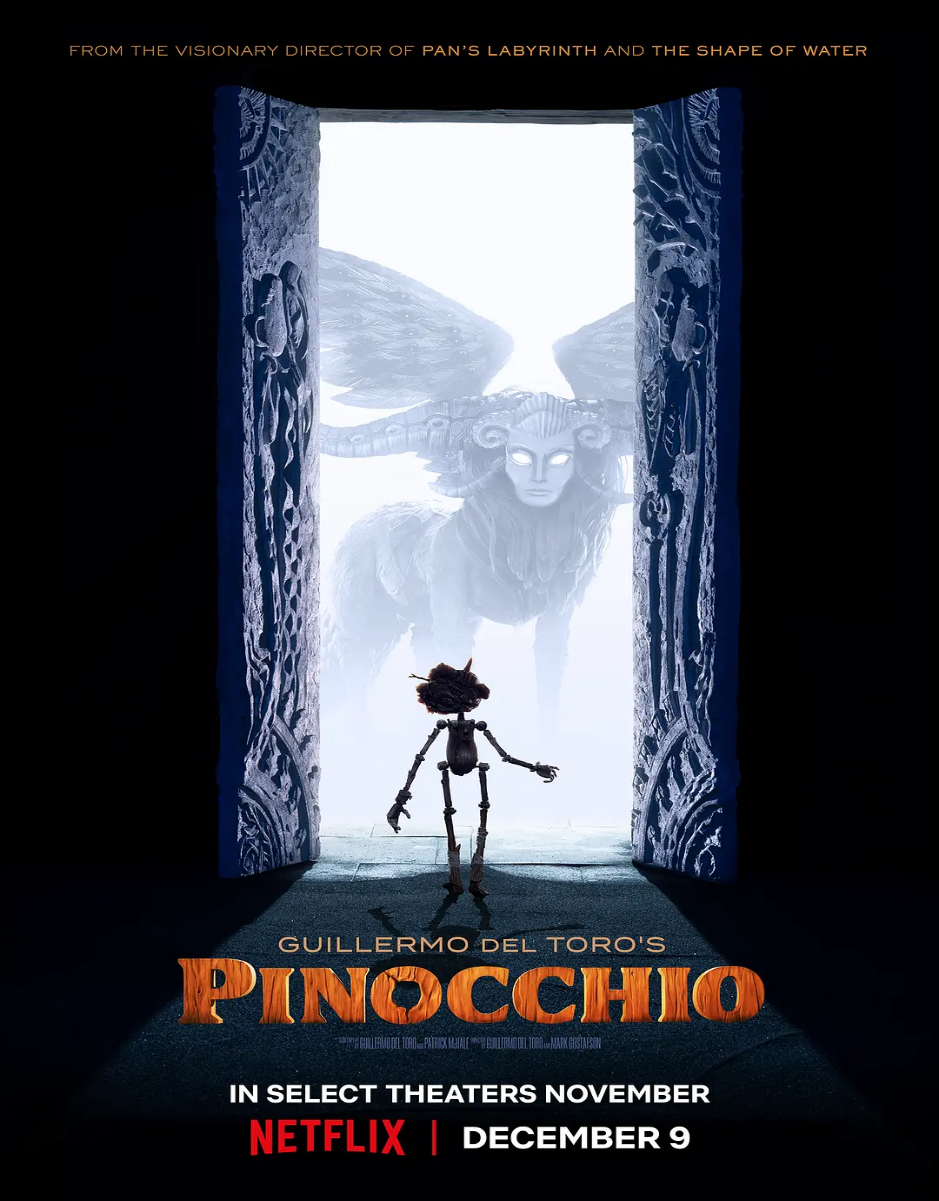In Toro’s film, it is unforgivable for a monster to become a real person.When the film proceeds to 9:04, the puppeteer Jepetto’s lovely son Carlo is killed by a bomb, the still unseen Pinocchio thus declares that he has lost his essence, and he is destined to be a substitute for the deceased Carlo for a long time.
The audience’s expectation of the ending of this classic story was modified. The goal of the young protagonist is no longer to turn from a puppet into a real person, but from Pinocchio into Carlo.
It must be admitted that when Carlo has a real and lovely concrete image and quickly fades away, if the ending allows Pinocchio to become Carlo, it can almost completely satisfy the audience’s expectations and turn into another so-called perfect fairy tale.
However, the director, in the middle of the narrative process, has not moved to reverse this expectation and tell a Pinocchio belonging to Guillermo del Toro.
1. The war in the fairy tale
You should have noticed that Toro’s Pinocchio story takes place during World War II, a classic fairy tale that is rarely pointed to a specific historical moment.
The monster in wartime certainly has its aesthetic justification, but apart from that, I think what Toro wanted more than anything else was to give a realistic meaning to the fantasy story. Toro does not want to make it just a fantasy, he wants to blur the line between it and the real.
What he wants to tell now is the same realistic story that he has been telling all along: the way an outsider gets along with the world.
The outsider can exist in any form in art, and most of the time they are monsters, like the humanoid amphibian creature in The Shape of Water, like the god Pan in Pan’s Labyrinth, or Pinocchio at this point.
But in reality, the outsider eventually points to himself: a Mexican who immigrated to the United States.
The childhood fascination with monsters, and the contradiction of immigrant identity in adulthood, form the dramatic element in most of Toro’s films.
The world’s initial feelings about outsiders are one of fear, rejection, and curiosity.
In other versions of the adaptation, Pinocchio is a mischievous presence, but not a scary one. In Toro’s version, on the other hand, he incorporates Frankensteinian horror into the story as well. The birth of Pinocchio is not a pleasant, surprise filled moment. It is born on a rainy night, catalyzed by Geppetto’s alcohol and a curse to the heavens.
This attitude toward outsiders is what he feels as an immigrant.
Over time, people will gradually discover what can be used in the outsider, just as the mayor discovered the ability of rebirth on Pinocchio and decided to send it to the battlefield.
2. Disappearing reanimation ability
The ability to come back from the dead is also given to Pinocchio by Toro. Pinocchio several times through it to save his life, but also because it was sent to the battlefield.
At the end of the film, Pinocchio and Geppetto sink to the bottom of the sea, Pinocchio lost his life earlier, he came to Death, begging to speed up the resurrection time, so that he could go back to save Geppetto. Death tells him that if he wants to modify the resurrection process, he must personally break the resurrection time hourglass, but he will also lose the ability to resurrect – and become a real person.
Pinocchio broke the hourglass, he became what he had always dreamed of, a real boy, and thus saved his father.
But we must pause for a moment to consider the changes in Pinocchio: he becomes a real person, but not into the long-awaited Carlo, not even gaining human-like flesh and blood, he is still a puppet.
The puppet becomes a real person should have represented the ultimate sublimation, but in Toro’s story, become a real person like a punishment. Pinocchio’s growth, not only did not happen to the naked eye to improve, but rather in the loss of his rebirth ability to complete.
In fact, what Pinocchio gains is the ability to sacrifice willingly, a sacrificial ability that is divine and which cannot be gifted through others. The elimination of the ego and the dedication of oneself to the loved ones is a spiritual metamorphosis, whereby one grows into a man and needs no other external changes as a symbol.
This is not a story of a puppet becoming a boy, this is a story of a boy becoming an adult.
Doro praises the divine Pinocchio, and he compares Pinocchio with Jesus several times in the film.
3. The lonely patient who reconciles with the world
In most of Toro’s other films, after the monster fights against the world, he goes to an isolated ending. In “The Shape of Water”, the monster eventually takes his lover and hides in the deep sea. People who like monsters, like monsters, are happy in solitude.
In Pinocchio, the monster begins to reconcile with the world. He makes friends with crickets, monkeys, and humans during his journey. Having lost his ability to be reborn, he has become the same as the world in the most important things, and eventually all have to accept the arrangement of death.
But he must maintain the wooden character of reconciliation, which means mutual acceptance; not only have I accepted the world, but the world must also accept me.
During his journey, Pinocchio has already gained the recognition of his companions through his kindness and courage, and he has proved that he can live with the world and be beneficial to it. The world does not need a uniform race of people.
If Pinocchio eventually becomes Carlo, it is like America telling an immigrant that it can accept him, provided he becomes a pure white American.
This reminds me of Beauty and the Beast, where the author praises the Beast, but to make the story even better, he makes the Beast into a prince at the end.
In just one moment, all his previous praise turned into a carefully planned PUA.

